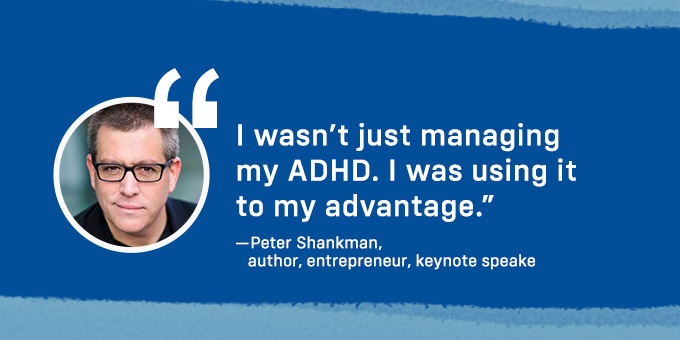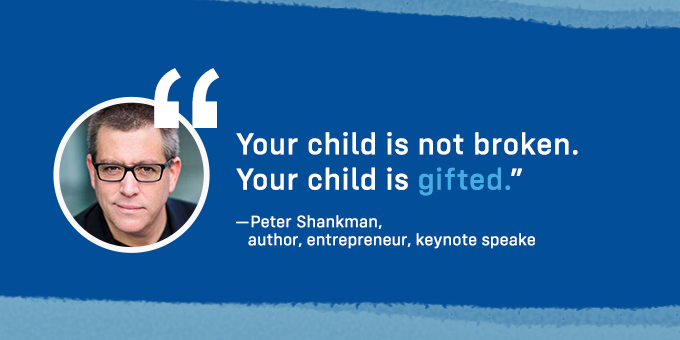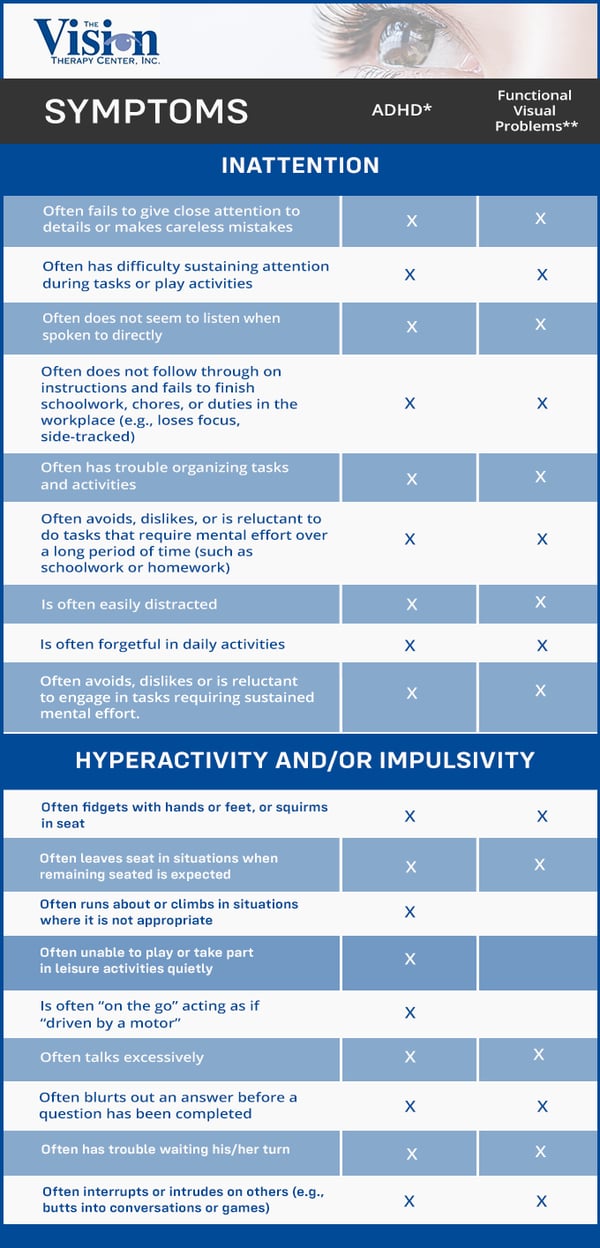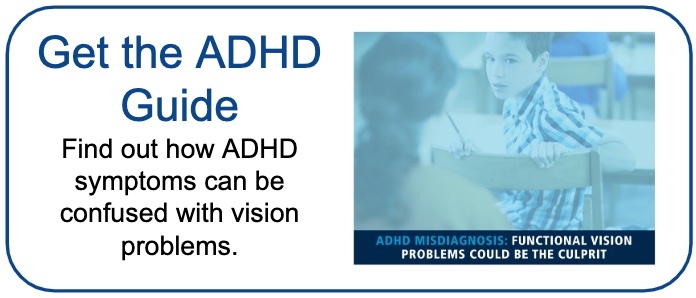
Nearly 10% of children have ADHD according to the Centers for Disease Control. What happens when these kids become adults? Peter Shankman says ADHD can be their “superpower”—if they learn how to use it.
Shankman credits his own ADHD for helping him become an incredibly successful entrepreneur, international keynote speaker, and best-selling author of books on a variety of subjects, including ADHD.
Below, we’ll explore Shankman’s insights on the positive potential of ADHD. We’ll also consider the similarities between ADHD and functional vision problems. If you think your child shows ADHD symptoms, you may be surprised to learn it could actually be a functional vision problem.
Shankman’s “Medicine” for ADHD and Success
Shankman says people with ADHD have a different brain chemistry that can make seemingly normal activities difficult. Although he wasn’t formally diagnosed with ADHD until his 30s, he says by then he had unknowingly been “beneficially self-medicating” himself. “I wasn’t just managing my ADHD. I was using it to my advantage.”

Skydiving, training for triathlons, taking what some considered huge business risks—Shankman says these things were actually giving him the dopamine, serotonin, and adrenaline hits that allowed him to focus, and fueled him through a highly productive day.
“Once I realized this, I saw a path to get even more from my brain. I realized that people with ADHD think in a way that’s faster than normal. But they need to know how to use that ability. If your brain is like a Lamborghini, you need to learn how to drive it—or else you’re going to crash into a tree.”
The Critical Importance of Daily Routines for Shankman (That Could Help You Too)
Shankman has said that resolutions aren’t the key to success—rituals are. And according to him, this holds true for children with ADHD, adults with ADHD, and “normal speed” people.
So even if you’re not into jumping out of planes or training for Ironman competitions, Shankman says sticking to basic daily routines can be life-changing. Here are some of his most important ones:
- Getting up early/going to bed early. Shankman is up at 4 a.m. and in bed by 8 p.m. “There’s so much benefit to that. You own the day.” (Sidenote: He goes to sleep in his gym clothes. See next bullet.)
- Exercising daily. “Every morning I’m on my treadmill, my Peloton bike, or at the gym. I didn't know how mandatory this needed to be until I saw how this made such a difference in my life.”
- Limiting distractions. For example, “When I’m in the office by 7 a.m. I have at least two and a half hours totally to myself. I blew through answering, like, 70 emails this morning!”
- Minimizing choices. Shankman says he has two basic outfits: “I’m wearing either a T-shirt and jeans or a button-down shirt and jeans, depending on whether I’m traveling/going to the office, or speaking/going on TV.”
A Gift, Not a Curse: Shankman’s Message to Parents
Shankman recalls that growing up was tough. “An ADHD diagnosis didn’t really exist then. I was socially awkward. I was different, and I got beat up a lot. I also found it almost impossible to concentrate on things I hated, like math and science, but could really concentrate on things I liked.”
So what advice does Shankman have for parents? “If you’re concerned your child might have ADHD, by all means get them evaluated by a professional. We didn’t have that option when I was a kid. Putting a name to something your child has been struggling with could be a big help,” says Shankman.

And if they do have ADHD, he says you need to remember, “Your child is not broken. Your child is gifted. They just have a different brain than most kids, and it’s going to take some time to learn how to best use that brain. But it doesn’t mean they can’t live their best life possible.”

The Similarities Between ADHD and Functional Vision Problems: The Vision Therapy Center’s Message to Parents
Shankman’s insights and experience can be helpful to children with ADHD, and for their parents as well. But not all children who exhibit ADHD-like symptoms actually have ADHD.
If you suspect your child has ADHD, or even if your child receives an ADHD diagnosis, The Vision Therapy Center suggests the next thing you do is rule out a functional vision problem by having your child tested.
Why? Because many people—including physicians—don’t realize that the symptoms of ADHD and functional vision problems can be strikingly similar:
 Sources:
Sources:
*The Centers for Disease Control and Prevention’s shortened form of ADHD criteria based on the Diagnostic and Statistical Manual of Mental Disorders, Fifth Edition (DSM-5)
**American Optometric Association
More Reasons for a Functional Vision Exam
It’s also possible that a child can have both a functional vision problem and ADHD. If the Functional Vision Exam reveals a problem, we can know for certain that it’s contributing to the difficulty with attention.
It’s critical that functional vision problems are identified because they can be treated with an individualized program of optometric vision therapy.
If you think your child's ADHD-like symptoms could be a functional vision problem, schedule a Functional Vision Exam.
For more information on Peter Shankman’s insights on ADHD, check out his podcast, Fasterthannormal.com, the #1 ADHD podcast on iTunes, and his book Faster Than Normal: Turbocharge Your Focus, Productivity, and Success with the Secrets of the ADHD Brain.


